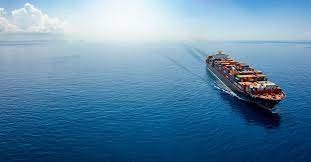Shipping from UAE to Saudi Arabia: A Maritime Trade Powerhouse
The maritime shipping corridor between the United Arab Emirates (UAE) and Saudi Arabia represents one of the most dynamic and strategically important trade routes in the Middle East. As both nations accelerate their economic diversification efforts and strengthen their positions as global logistics hubs, the shipping connection between these neighboring Gulf states has become increasingly vital for regional and international commerce.
Market Overview and Strategic Importance
The UAE-Saudi Arabia shipping corridor operates within the broader context of the Middle East’s transformation into a world-class integrated logistics hub. The Middle East is fast developing into a world-class integrated logistics hub, with potential to become a key international trade point. This development is particularly significant given the region’s strategic location connecting Asia, Europe, and Africa.
The UAE’s maritime sector alone demonstrates impressive growth potential. The United Arab Emirates Freight And Logistics Market size is expected to reach USD 21.63 billion in 2025 and grow at a CAGR of 6.90% to reach USD 30.19 billion by 2030. This growth trajectory underscores the increasing importance of maritime trade routes, particularly those connecting the UAE with its neighboring Gulf states.
Port Infrastructure and Capabilities
UAE’s Maritime Infrastructure
The UAE operates a comprehensive network of maritime facilities that serve as crucial gateways for regional trade. The UAE has 12 commercial trading ports, other than oil ports. It contains 310 berths, with cargo tonnage of 80 million tonnes. This extensive infrastructure provides multiple options for shippers seeking to move cargo between the UAE and Saudi Arabia.
Key UAE ports serving the Saudi Arabia route include:
Jebel Ali Port (Dubai): As one of the largest container ports in the world, Jebel Ali serves as the primary hub for UAE-Saudi trade. Its strategic location and advanced facilities make it the preferred choice for major shipping lines operating between the two countries.
Port Rashid (Dubai): Historically significant as Dubai’s original major port, Port Rashid continues to handle substantial cargo volumes and serves as an important alternative to Jebel Ali for certain types of shipments.
Khalifa Port (Abu Dhabi): As the newest major port facility in the UAE, Khalifa Port offers state-of-the-art infrastructure and serves as a key gateway for cargo destined for Saudi Arabia’s western regions.
Zayed Port (Abu Dhabi): Zayed Port – This port in Abu Dhabi city was the emirate’s main general cargo port for 40 years. Currently, it is dedicated for cruise liners. While now primarily focused on cruise operations, it maintains some cargo handling capabilities.
Saudi Arabia’s Port Network
Saudi Arabia’s maritime infrastructure provides multiple entry points for cargo originating from the UAE. The kingdom’s western coast ports, particularly Jeddah Islamic Port and King Abdulaziz Port in Dammam, serve as the primary destinations for UAE-originating cargo.
The Saudi maritime sector has been experiencing significant growth and modernization. Saudi Ports Authority records 13.61% year-on-year increase in container handling in March 2025, indicating robust demand for maritime services and the effectiveness of infrastructure investments.
Shipping Routes and Services
Primary Shipping Corridors
The UAE-Saudi Arabia shipping corridor operates through several well-established routes:
Red Sea Route: Connecting UAE ports with Saudi Arabia’s western coast ports, including Jeddah and Yanbu, this route serves the kingdom’s most populous regions and supports imports destined for the holy cities of Mecca and Medina.
Arabian Gulf Route: Linking UAE ports with Saudi Arabia’s eastern coast ports, particularly King Abdulaziz Port in Dammam, this route facilitates trade with the kingdom’s industrial and oil-producing regions.
Shipping Line Services
Major international shipping lines have recognized the importance of the UAE-Saudi corridor and established dedicated services. The new ocean shipping service aims to provide a quicker and more predictable connection Maersk AP Moller–Maersk (Maersk) will launch specialized services connecting India, UAE, and Saudi Arabia, demonstrating the corridor’s integration into broader regional trade networks.
Types of Cargo and Trade Commodities
The UAE-Saudi shipping corridor handles a diverse range of cargo types, reflecting the complementary nature of the two economies:
Consumer Goods: Electronics, furniture, automotive parts, and household appliances comprise a significant portion of the trade volume, supporting Saudi Arabia’s growing domestic market and retail sector.
Construction Materials: Both countries’ ongoing infrastructure development projects generate substantial demand for construction materials, cement, steel, and building equipment.
Industrial Equipment: Machinery, manufacturing equipment, and industrial components support Saudi Arabia’s Vision 2030 industrial development goals.
Food and Agricultural Products: Re-exports of food items, agricultural products, and processed goods from the UAE to Saudi Arabia serve the kingdom’s food security objectives.
Textiles and Apparel: The UAE’s role as a regional distribution hub for textiles and clothing generates significant cargo volumes destined for Saudi markets.
Economic Impact and Trade Volumes
The economic significance of UAE-Saudi shipping trade extends beyond simple cargo volumes. The corridor supports both countries’ economic diversification strategies and their ambitions to become regional logistics hubs.
Regional Port Performance
The broader Gulf region has demonstrated exceptional performance in global maritime rankings. Ten ports in the Gulf Cooperation Council (GCC)—which includes the member states Saudi Arabia, Oman, the UAE, Qatar, Kuwait, and Bahrain—ranked among the 70 most efficient ports in the world in 2024. This efficiency translates into competitive advantages for UAE-Saudi trade, including faster transit times, lower costs, and improved reliability.
Economic Diversification Impact
As the Saudi and Emirati governments work to diversify their economies, they are taking a close look at the business of ports and shipping. This focus on maritime infrastructure development supports the corridor’s long-term growth potential and reinforces its strategic importance.
Operational Advantages and Competitive Factors
Geographic Proximity
The relatively short distance between UAE and Saudi Arabian ports creates natural advantages for shippers, including reduced transit times, lower fuel costs, and more frequent service schedules compared to longer international routes.
Customs and Regulatory Environment
Both countries have invested significantly in modernizing their customs procedures and trade facilitation systems. Streamlined documentation processes, digital customs platforms, and harmonized regulations reduce delays and costs for shippers using the corridor.
Multimodal Connectivity
The UAE-Saudi shipping corridor benefits from excellent multimodal connectivity, allowing cargo to seamlessly transition between sea, land, and air transportation modes. This flexibility enables shippers to optimize their logistics strategies based on cargo type, urgency, and cost considerations.
Technology and Innovation
Digital Integration
Both countries are implementing advanced digital technologies to enhance shipping efficiency. Smart port technologies, automated cargo handling systems, and real-time tracking capabilities improve operational efficiency and provide shippers with better visibility into their cargo movements.
Sustainability Initiatives
Environmental considerations are increasingly important in maritime operations. Both UAE and Saudi Arabian ports are investing in green technologies, including shore power systems, emission reduction programs, and sustainable port operations to minimize the environmental impact of shipping activities.
Future Outlook and Development
Infrastructure Expansion
Continued investment in port infrastructure expansion and modernization will enhance the corridor’s capacity and efficiency. Planned developments include additional berths, improved cargo handling facilities, and enhanced connectivity to inland transportation networks.
Integration with Vision 2030
Saudi Arabia’s Vision 2030 economic transformation program includes significant maritime sector development goals. The integration of UAE-Saudi shipping services with these broader economic objectives will likely drive increased trade volumes and service improvements.
Regional Hub Development
Both countries are positioning themselves as regional logistics hubs serving broader Middle Eastern, African, and Asian markets. The UAE-Saudi shipping corridor will play a crucial role in these hub development strategies, potentially serving as a model for other regional trade partnerships.
Challenges and Opportunities
Regulatory Harmonization
Continued efforts to harmonize customs procedures, trade regulations, and documentation requirements will be essential for maintaining the corridor’s competitiveness and supporting future growth.
Capacity Management
Managing capacity expansion to match growing trade volumes while maintaining service quality represents an ongoing challenge requiring careful planning and investment coordination.
Security and Stability
Regional security considerations, including the recent disruptions in Red Sea shipping routes, highlight the importance of the UAE-Saudi corridor as a stable and secure alternative for regional trade.
Conclusion
The shipping corridor between the UAE and Saudi Arabia represents a critical component of Middle Eastern maritime trade infrastructure. With strong growth prospects, continued infrastructure investment, and strategic alignment with both countries’ economic diversification goals, this corridor is positioned to play an increasingly important role in regional and global trade networks.
The combination of geographic advantages, modern infrastructure, efficient operations, and supportive government policies creates a compelling value proposition for shippers seeking reliable, cost-effective maritime services between these two dynamic Gulf economies. As both nations continue to develop their maritime capabilities and strengthen their positions as global logistics hubs, the UAE-Saudi shipping corridor will remain a vital artery for regional commerce and economic development.
The success of this maritime corridor demonstrates the potential for regional cooperation to create competitive advantages in global trade, setting a precedent for similar partnerships throughout the Middle East and beyond. As international trade patterns continue to evolve, the UAE-Saudi shipping route stands ready to adapt and grow, supporting both countries’ ambitions to become central players in the global logistics landscape.



